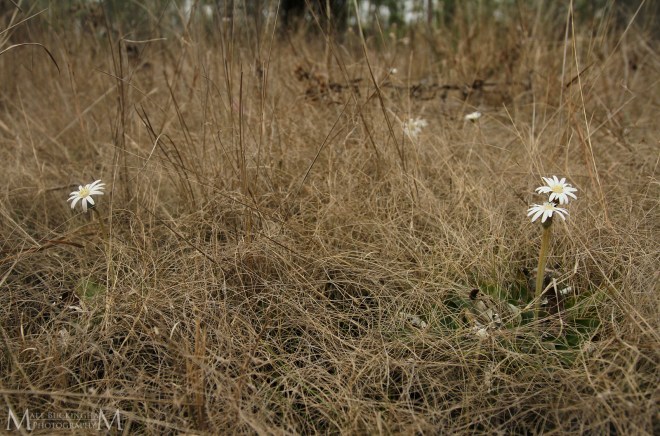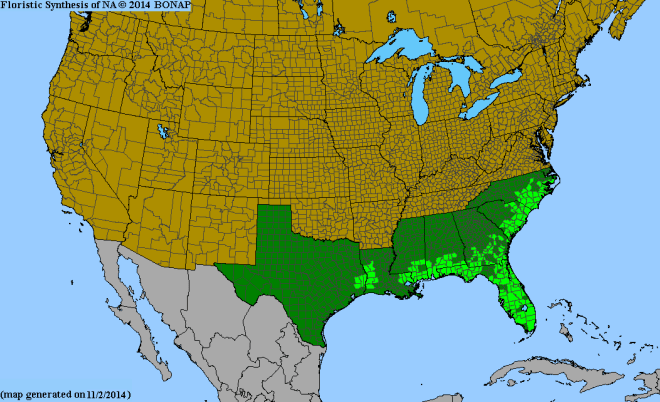Target Species: Woolly Sunbonnets (Chaptalia tomentosa)

Woolly Sunbonnets in a Wetland Pine Savannah
Spring came early this year, with many wildflowers blooming as much as three weeks earlier than in an average year. It has made planning botanical outings to find species on my 2017 target list a challenge. Fortunately I had some help with Chaptalia tomentosa, the first species that I would check off the list. Someone on a Facebook group I moderate (Texas Flora) posted an image of one looking for help identifying it.

County Level Distribution of Chaptalia tomentosa from http://www.bonap.org
Woolly sunbonnets is a species of the coastal plain, ranging from North Carolina to extreme eastern Texas. It occurs in herbaceous seeps and wetland savannahs where highly acidic soil remains perpetually saturated. These communities are typically associated with longleaf pine uplands. In East Texas longleaf pine typically occurs on sands of moderate depth. Rainfall quickly percolates through the coarse sand, however if, on its journey through the soil, it encounters a dense clay layer, it will sit or gently flow, as clays are much more difficult to pass through. Where these clay layers meet the surface, the water may pool or seep out forming a unique vegetative community. The movement of water through these areas leaches essential nutrients and organic material tends to accumulate over time. These harsh, damp habitats are home to interesting species including a variety of carnivorous plants and orchids.

Woolly Sunbonnet
I have spent considerable time exploring wetland pine savannahs and forested seeps in East Texas, but never in the early spring. Spurred by the image posted on Facebook my wife, Carolina, and I visited some locations of specimen records and other areas that I knew had suitable habitat. I am lucky to have such a great adventuring companion. Carolina not only makes for great company, she also has excellent eyes and spots my targets more frequently than I do.

Woolly Sunbonnets
Also known as the Pineland Daisy, Chaptalia tomentosa is a member of the sunflower family (Asteraceae). The white blooms open midday under warm, bright conditions. This is an adaptation shared by many plants in order to maximize exposure to potential pollinators. At night and on cool days when most pollinators are not active, the flowers close in order to protect the pollen and the plants’ sexual structures. We were lucky to find many open flowers on our outing, and mostly cloudy skies made for ideal photographic conditions.

Woolly Sunbonnets
Chaptalia tomentosa was not the only species active in the bog. Fresh spring pitchers of the Pale Pitcher Plant (Sarracenia alata) were beginning to emerge and the unmistakable red rosettes of sundews (Drosera spp.) covered the ground. One particularly quirky plant, the Small Butterwort (Pinguicula pumila) was blooming alongside the sunbonnets. This tiny carnivorous plant has concave leaves lined with hairs coated in sticky enzymes. When an unsuspecting ant or other small invertebrate comes into contact with the enzymes they find themselves stuck as the leaf envelopes them like a hot dog bun.

Small Butterwort
White Bog Violets (Viola lanceolata) were also blooming. This attractive little flowers are common in areas with saturated soil.

White Bog Violet
While walking through one of the wetland pine savannahs Carolina called out that she had spotted a frog. Sure enough, at least 50 feet away was a Green Tree Frog (Hyla cinerea). Resting on the bleak winter vegetation, it stuck out like a sore thumb.

Green Tree Frog
After an eventful day photographing vernal bog flora Carolina and I ventured to the adjacent longleaf pine uplands to enjoy the sun’s final rays and the day’s retreat into night. There is something about a high quality longleaf pine forest and its associated seepage communities that provide me with a feeling of wonder and excitement that is sought after yet elusive for so many. As the light faded away we returned home, content in a day spent in some of our state’s most biodiverse habitats.

Longleaf Pine Savannah
